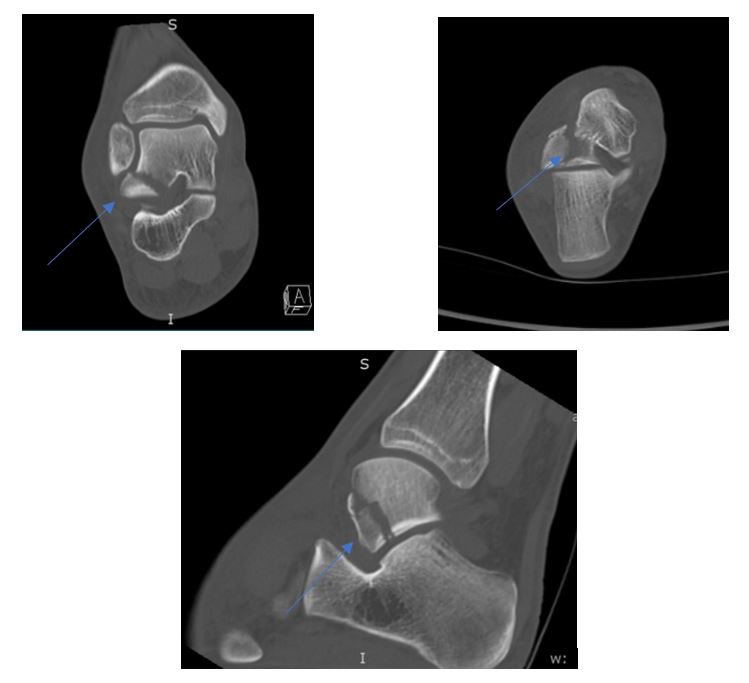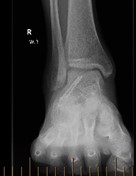A lateral talar process fracture is 15x more common in snowboarders compared with any other ankle injury. It occurs in a hard-to-spot location, often being missed on plain ankle X-ray and is therefore commonly mis-diagnosed as a simple ankle sprain.
The lateral talar process can be fractured by compressive forces, such as when landing hard from a jump on a dorsiflexed and everted ankle (ankle and foot pressed up and outwards) or from landing on the ankle with the foot twisted into inversion whereby the tough lateral talocalcaneal ligament pulls-off the lateral talar process.
Snowboarder’s fractures require a significant amount of force to be put through the ankle during the injury and therefore are more common in intermediate and advanced snowboarders, travelling at higher speeds.
Snowboarders are vulnerable to this fracture as their feet are bound to a hard board within boots that, relative to ski-boots are fairly soft. Additionally, the feet are positioned cross-wise relative to the direction of travel of the snowboard, meaning the subtalar joint, with motion that is limited in comparison to the ankle joint, has to absorb the majority of changes in ground-force.



